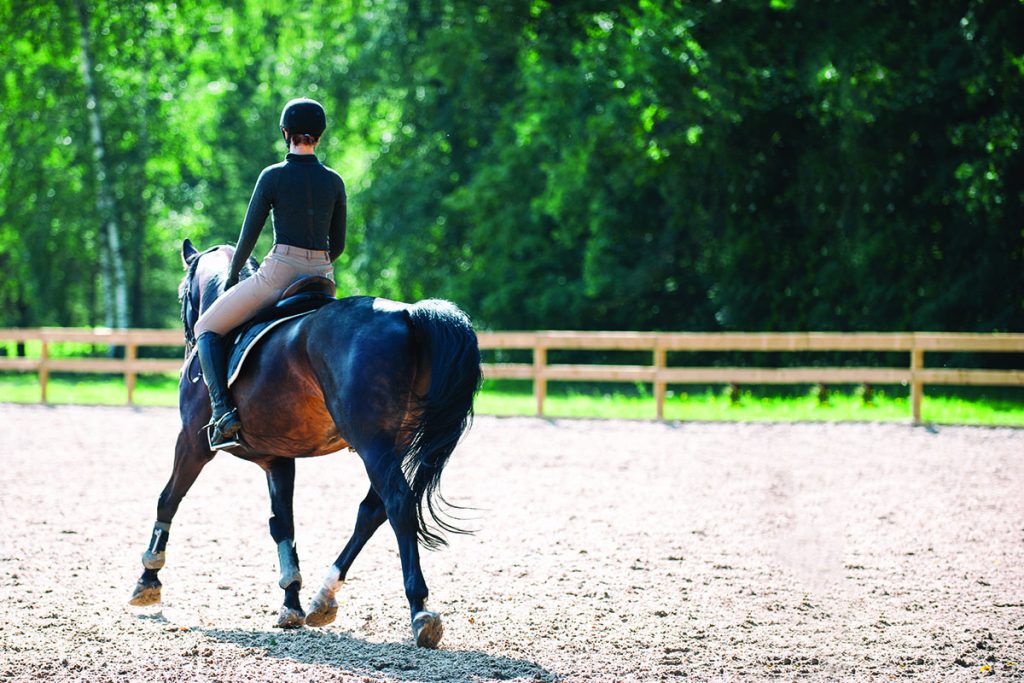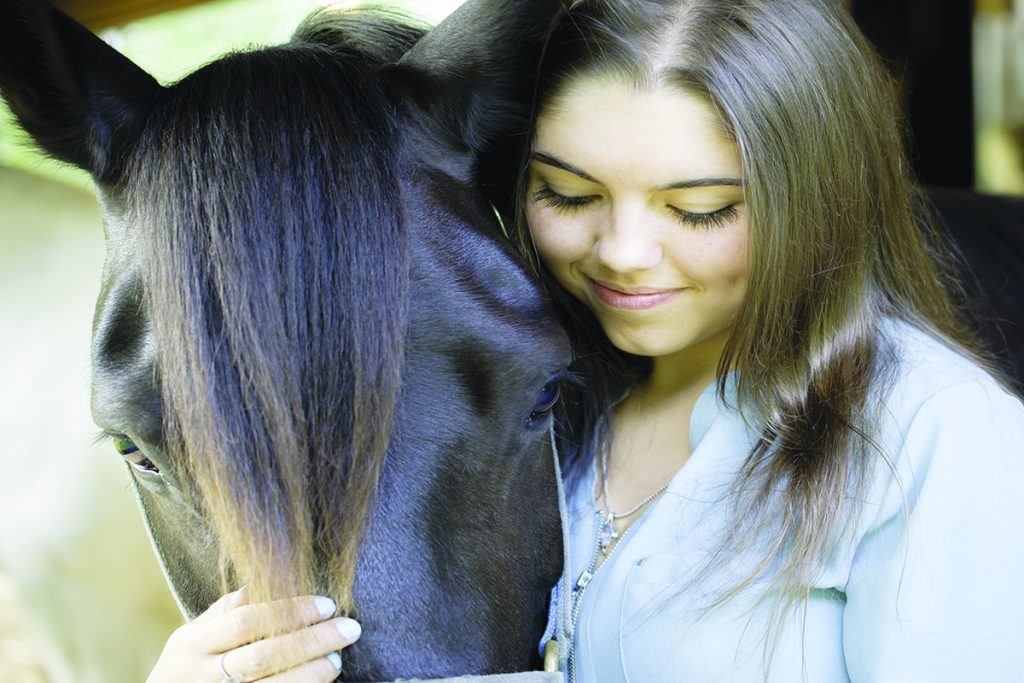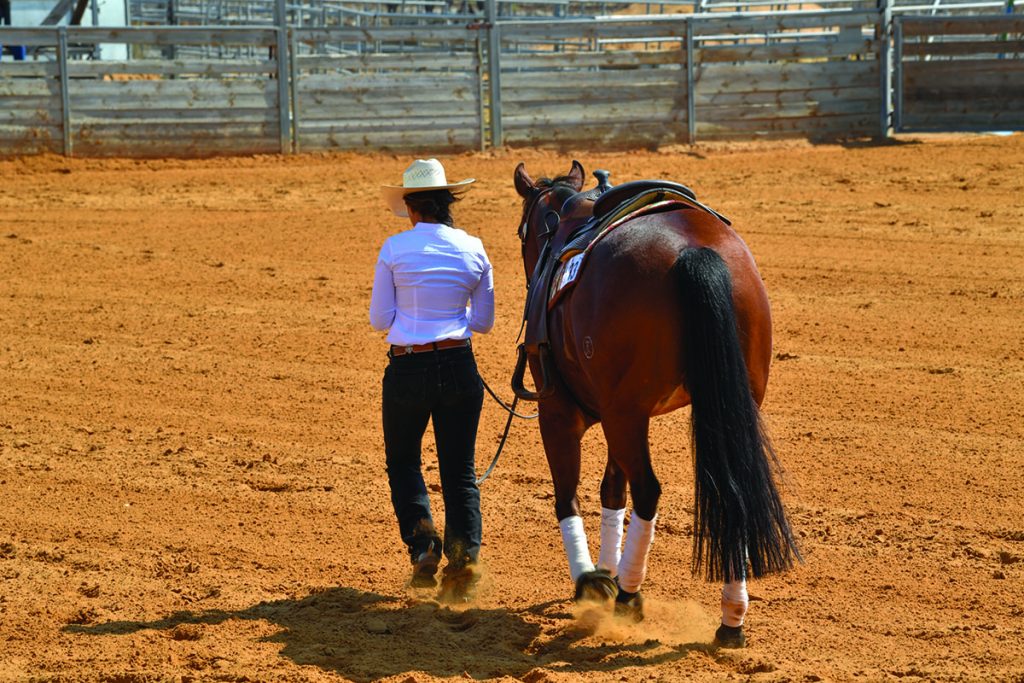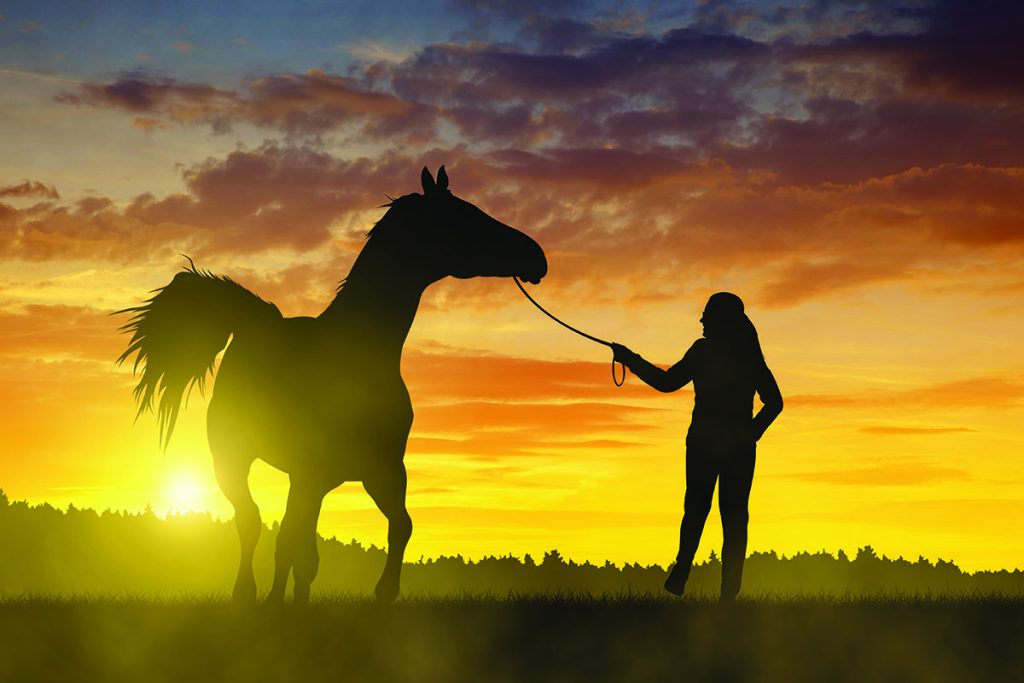Finding a new horse can seem like fun at first, then quickly becomes hard work. You spend hundreds of hours poring through ads and talking to friends who offer hot leads. When you finally find a horse, it’s like the clouds part and the sun shines down. You could never imagine selling your “perfect” horse.

Hindsight 20/20
Samantha Whited was a barrel racer looking for the perfect horse to take her to the next level when she came across an ad that made her heart skip a beat: A gorgeous, jet-black Quarter Horse gelding, Dash, who was also a finished barrel horse.
Whited bought the gelding, excited for all the adventures she was planning with her new partner. A lifelong horsewoman, she wasn’t just interested in the accolades the two could rack up; she also loved spending time with Dash and creating a partnership and connection. Though they were the perfect fit on the ground, the translation of that trust to under-saddle work just never came, no matter how hard Whited tried.
For seven years, she tried, trained, struggled and experimented with Dash to find something that would make the two of them click. She even went on a TV show with the gelding seeking the root cause of their issues. But nothing worked.
“I loved that horse and he loved me—we had an amazing relationship out of the saddle,” says Whited. But after years of riding him, she knew something had to give. “I finally realized that this was an incredible horse that I was holding back from reaching his full potential. So the decision was made to let him move on to a more confident and better-suited rider for his ultimate success.”

Once the decision was made that it was time to consider selling her horse, there was no relief—just sadness. One thing that helped assuage Whited’s anxiety about finding Dash a good home was placing him on a lease-to-own trial.
“This made me feel like I had control if things didn’t work out,” she explains.
This arrangement comforted her; she knew she was sending her beloved friend to someone who would watch over his wellbeing. Whited remains in contact with Dash’s new owner.
“He seems so happy with a person better suited to his natural demeanor,” she reports.
Looking back, Whited says she should have made the decision to sell Dash much earlier, but admitting her “dream horse” wasn’t for her took a lot longer to work through.
“Selling a horse is a responsibility I don’t take lightly, but if you can put the horse in someone else’s hands where things fit more naturally, everyone is happier in the end—especially the horse,” she concludes.
Soundness Challenges
Growing up in a decidedly non-horsey family, Lydia Davis took every opportunity she could to ride, finally purchasing her first horse during her senior year of college.
“I was pretty particular about what I was looking for,” Davis explains. “I was specifically seeking a young, registered Quarter Horse with no pre-existing injuries.”
Davis ended up purchasing Invy’s Little Star in 2011, with hopes that they could dabble in everything from western events and trail riding to eventing.
“I wanted to learn with her,” Davis explains.
After a decade together, however, Davis’s dreams of having a horse to go on adventures with were coming to a halt, as Invy was having ongoing soundness issues. Working in the nonprofit world, Davis’s ability to afford intense management strategies was limited.
“Ultimately, I decided that I needed to rehome her because her soundness issues were becoming too financially costly to manage and were inhibiting her from performing physically at the level I sought.”

It’s important to note that Invy stayed sound in lighter work and enjoyed having a job. The decision to find her a more suitable home wasn’t one Davis took lightly; she considered selling the mare for over four years before finally making the decision that was best for both of them.
“Although she was (and still is) a very special horse to me, our paths were simply moving in different directions,” Davis explains.
Davis enlisted the services of the Re-Ride Quarter Horse Adoption Program, which placed Invy with the Miami University equestrian program in Oxford, Ohio.
“Once I ultimately decided to part with Invy, it was certainly heartbreaking, but there was a sense of peace about the decision as well,” Davis shares. “I had wrestled with what to do and wondered what the best decision for her was for so long that making a decision—albeit a really tough one—brought me solace.”
Davis remains in contact with the staff at Miami and is updated regularly on how the mare is doing.
Selling a Horse: The Hardest Choice of All
Unfortunately, some perfect horse finds turn into nightmares. Horses can become so quirky—or outright dangerous—that rehoming them would be too fraught with danger for both the horse and his new owner.
These horses can be the ultimate test of a horse owner’s mental fortitude. Though making the decision to rehome a horse can be stressful, making the decision to euthanize one instead of selling or rehoming brings with it an intense rollercoaster of emotions.
Often horse owners in this situation beat themselves up, wondering what they could have done differently or what other methods exist to try to “fix” the horse.
Hannah Smith grew up spending hours on end at the farm where she took lessons. A true barn rat, she particularly enjoyed shadowing the veterinarians and farriers who came to the farm.
“I’m thankful they actually let me be annoying because they nurtured my love for horse health early on,” says Smith, who obtained an equine science degree and is now an assistant broodmare manager on a prominent Thoroughbred breeding farm.
Once settled on the farm, a coworker told her about a retired racehorse named Heavy in need of a job. Having broken and trained multiple horses, Hannah was excited to get back in the saddle with one of her own.
At first, Smith enjoyed working with the gelding, beginning to teach him the ropes of his new career as a jumper. He was kind, sweet and willing. She became more enamored with his personality during every ride.

“When things went wrong, it took me by surprise,” she explains. “During a routine mounting, something we had done a million times before with no problems, Heavy lost his mind.” With one leg in the stirrup and no way to scramble aboard or dismount rapidly, the event landed Smith in the emergency room with a fractured neck and back (C2 and L1), a potentially devastating injury.
“I’m lucky to be walking, much less riding again,” says Smith. “I was baffled by what happened. While I was recovering for three months, Heavy sat in a field. When I was cleared by my doctors, I decided to completely start him over to see if I had missed a step and if that was causing the issues. We started with groundwork and then prepared to transition to riding again. Up to that point, everything had gone perfectly; he was a gentleman for each of our sessions.
“But the second my foot went in the stirrup to mount the first time, I saw his eye change. I will never forget the feeling of being 9 feet in the air and thinking, ‘You got lucky once, you won’t get lucky again,’ and thinking this was where it ended for me,” she says. That time, Smith was hospitalized with a broken pelvis.
Searching for Answers
“I had him scoped and evaluated by vets and he was deemed healthy and happy—multiple times,” she says. The clean bill of health left Smith with no explanation of why Heavy would explode when she went to mount. Broken once again, Smith was left disheartened and confused. She began weighing her options.
“How could I live with myself if I sold him, even with everything fully disclosed, and he hurt someone else with no warning?” she asks.
Not everyone has the financial means to turn out a horse for the next 20 years, and there was no guarantee that whatever Heavy was experiencing wouldn’t eventually trickle down into behavior issues on the ground.
“I spent six months pondering the decision I ultimately made,” Smith says. “After consulting with multiple vets, my trainer and many friends I trusted, I made the gut-wrenching decision to put him down. While it took six months to decide, it took six seconds to see the relief in his eye and feel the weight literally lift off my shoulders. It wasn’t easy, but I loved that horse and I wanted him to always be safe and loved.”
For Smith, it was the right decision.
“It’s not an easy situation, but what is best for the horse will always be the right answer,” she says. Smith feels the decision to euthanize a horse is complicated, and because everyone’s situation is different, there’s not one right answer.
Likewise, selling a horse you thought was Mr. Right can be deeply distressing; it can feel like all of your dreams are lost and make you question your abilities, both as a rider and an owner. But horse owners are a tenacious bunch. Concluding that a new home or euthanasia is best for the horse can feel like admitting defeat, but it’s important to remember it isn’t. You’re offering the horse a great kindness by finding the best situation for his physical and emotional needs.
This article about selling your “perfect” horse appeared in the July 2021 issue of Horse Illustrated magazine. Click here to subscribe!





